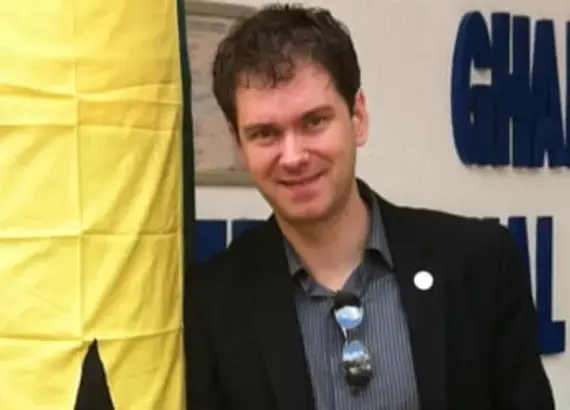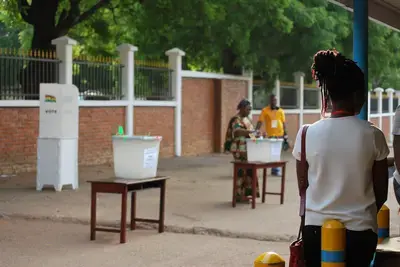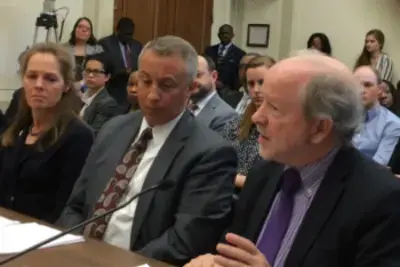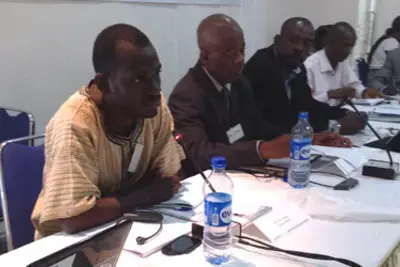
Success Story
Staff Interview: Mobile Voter Education and Radio in Ghana's Election
This article was originally published on the NDItech DemocracyWorks blog.
In Ghana's recent election NDItech partnered with the Coalition of Domestic Election Observers (CODEO), an independent Ghanaian NGO focused on election accountability. Our goal was to increase information to citizens about the election. CODEO ran a large monitoring program where 3,999 citizen observers transmitted incidence and election results data via SMS to a central data center - a standard systematic election observation.
CODEO also used social media as part of a citizen communication campaign to voters via a Facebook page where political issues facing the country were actively debated, and a call-in service for radio stations to broadcast voter information.
We spoke with NDItech's Program Officer Chris Doten about this innovative mobile audio-to-radio project.
Why Ghana?
Ghana has a robust technology infrastructure and a great NDI partner that was willing to try some new campaigns for this election and invited us to work with them. There also was a little bit of funding in place to do new media voter outreach, and we were able to run with it on a short time frame. Additionally, CODEO has a very good reputation in the country and we worked with them before in several previous election. The staff there is exceptional and was a pleasure to work with.
What did you do?
Our voter communication strategy was based on the assumption that we needed to go to where people are already. In Ghana, as many other places, radio is a widely accessed and popular medium. Of course, creating radio programs requires producing engaging, entertaining, and meaningful content that is promoted to radio stations and easily accessible to them so that they, in turn, can broadcast to their radio listeners. So, we produced an engaging series of audio clips that we set up on a system that radio stations could access by dialing in, and then promoted the clips to radio stations to broadcast to the public.
In Ghana, we used Freedom Fone, an open source interactive voice response (IVR) platform that allowed us to easily provide audio content, and we partnered with Farm Radio, an organization that produces radio programs for rural audiences.
Who was the target audience for the program?
We targeted radio stations who could access the clips and then broadcast them to the public, rather than the public directly.
Farm Radio works with a network of radio stations already, focused on agricultural information for rural listeners. During the election period, 600 people called in to the system. Many of them were indeed radio stations but the number suggests that individuals were also calling in to listen to the clips. While this is great, radio managers were always the main target.
How did it work?
First, Farm Radio set up a Freedom Fone server and then, with CODEO guidance, created engaging short audio clips into four local languages focused on educating voters about the election. Some examples are below. After FarmRadio uploaded them to the Freedom Fone server, they marketed the clip to radio stations to let them know there was a new piece available. Interested stations would then call in, navigate to the message they wanted, record the piece and play it back on the air.
We had one call-in line set up (with a SIM card on a modem) for each of the Ghanaian mobile networks; if two individuals called in at the same time from the same network, they would have gotten a busy signal. If the campaign had been geared towards the public at large, we would have to have, of course, many more lines open for people to call in directly to listen to the clips, and we would have had a much larger marketing budget for a big public campaign. Going through radio stations made the call-in service more economical and still reached a large public audience.
Without the Freedom Fone server that allowed the radio station to access the clips with a simple call, we would have needed to ship CDs to radio stations, expensive and time consuming.
How did you choose the content for the audio recordings?
CODEO had specific goals for the audio campaign in mind. Our partner wanted to convey some information about CODEO, help people understand what CODEO was doing for the election (namely, election observation), convey why the election was important, tell people about how the voting process works, and broadcast information about the biometric registration system. A former NDI employee with radio production experience wrote the scripts. The scripts were then edited by CODEO and Farm Radio recorded the radio spots, set up the Freedom Fone server, and marketed the clips to their radio contacts.
What lessons did you learn from the project?
As we were able to outsource much of the time-consuming work, the project did not place an undue burden on CODEO given the hectic election schedule. The program was also an example of an interesting collaboration. Farm Radio traditionally deals with agriculture topics but was keen to work on this project. Given the hard deadlines of an election, we sometimes had coordination difficulties. Anxiety ensued when emails with a need for quick response produced radio silence. But all the crunch was well worth it when we gathered around a basic Nokia phone and finally heard the great spots for the first time.
How could you recreate the project in a different country?
In Ghana, Farm Radio was essential to the process, so an implementer attempting to recreate in another country would need to find someone who would be able to produce the content creation and handle distribution. It would also be great to reach a larger audience to virtualize numbers to make a much larger number of lines available rather than stick SIM cards into modems for call-in numbers. It would also be great to work more directly with the Freedom Fone team, and be able to pull them, as they have a great program in place.
Currently, a program that NDI is involved in in Liberia is also using Freedom Fone for the legislature. We helped install a radio antenna on top of the Liberian parliament, and are assiting them in producing radio content. The team there is now working on radio programs that people can listen to via their mobile phones.
Published Jan. 14, 2013



